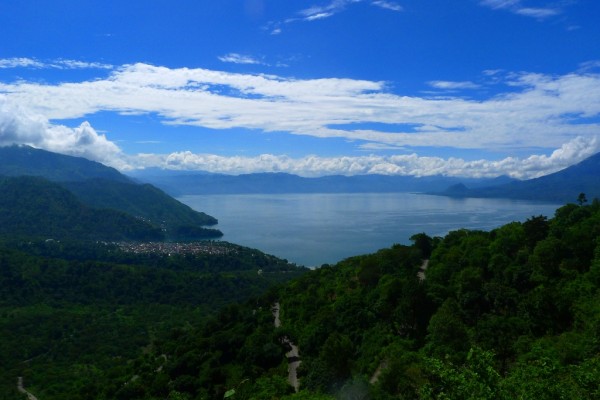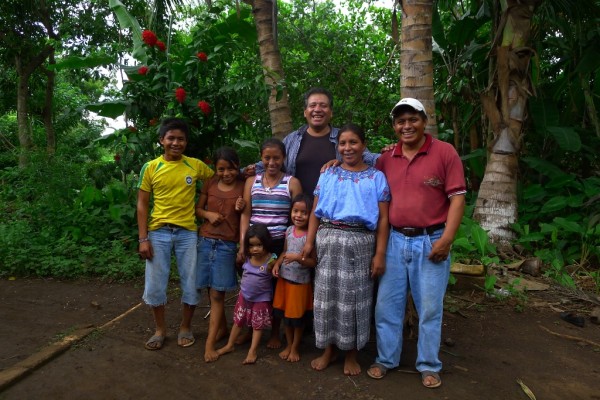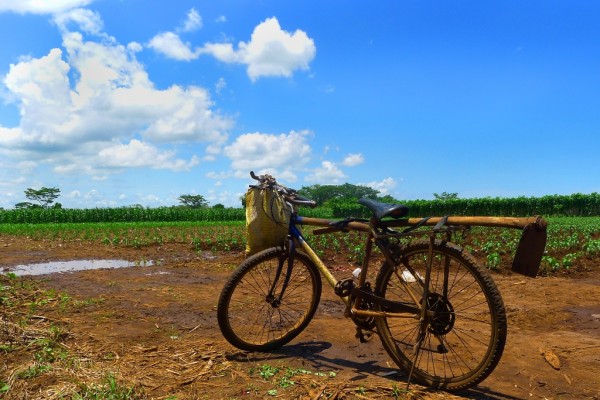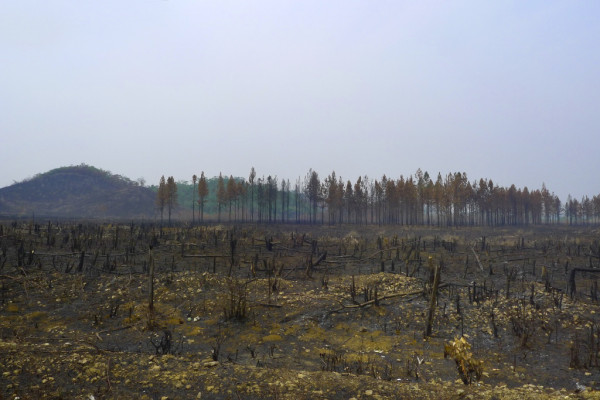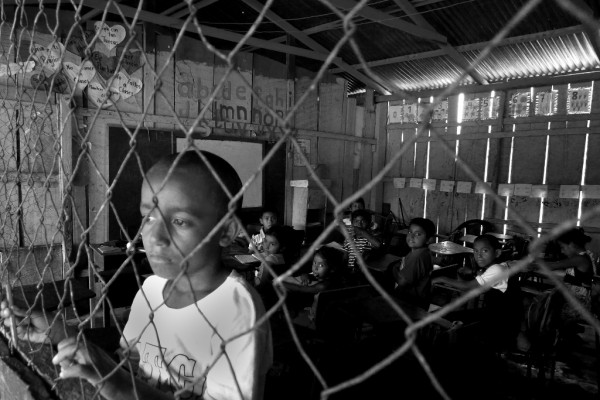The Beautiful Truth
To those who have any thoughts at all of Guatemala, crime, poverty, corruption and malnutrition tend to stand at the forefront of their image of the country. These overpowering, and very real, elements are usually softened by experiences of great color of native dress, stunning volcanoes, the beauty and peace of Lake Atitlan, and the infectiously chaotic markets and buses. But this is only the airy foam atop the rich and flavorful palate of the country’s spirit.
The realities of everyday life in Guatemala are so much more intriguing and beautiful than even the most brilliant, volcano framed, sunsets of the highlands. No one can deny the horrible circumstances in which Guatemalans find themselves, but if it’s all we see then we have failed to learn the very important lessons, and see the true beauty, of this nation.
For good or ill, Mexico tends to overshadow its neighbors to the south. It is a wildly diverse land which had the benefits of being the center of New Spain – it’s richness of culture is truly blinding. But crossing the border into Guatemala, if you have left your preconceptions behind, can be a mind blowing experience as well.
Though mostly impoverished, the native Mayans have ensured that they are an intricate and inseparable part of modern Guatemalan society. I don’t mean the empty flaunting of pride from the upper echelons of society, I’m referring to the very ethos of the country, which has remained rooted in the family. The regard for family and ancestors is prevalent on all levels of society, and as a result some of the simple mannerisms which are taken for granted in the west, are alive and well here. Because multiple generations continue to live together, the continuity of tradition is better preserved. What parents can never teach kids, grandparents happily and effectively impart on the next generation.
Language has been one of the greatest beneficiaries of this close nit family system. To this day, even with all the modernization and global attempts at simplification and homogenization of cultures within a country, most Guatemalans who live in a village or small town still speak their native Mayan dialect – some can even speak two or three. In more rural parts it is not uncommon to encounter people whose Spanish is little better than that of a tourist who came to Antigua to study it for a week. With language come traditions – some many hundreds of years old. There are still sacred spaces which serve to host ceremonies performed long before the first Spaniard set foot on this land. There are still medicine men and women who command a knowledge of hundreds of plant species and the medicinal use for each. Communal relations, farming, food preparation and oral histories which allow us a glimpse into pre-Hispanic Mayan culture (an invaluable tool for anthropologists and archeologists), remain intact in the majority of the country. Few parts of the world that have experienced the wrathful extermination of native culture by colonial European nations have preserved to such an extent their native traditions. Sadly, the colorful dress for which Guatemalans are famous, is the product of the Spaniards desire to modernize and keep track of native populations. But even that, in a world where jeans and mini-skirts are the uniform of the young, remains a testament to Guatemalan’s perseverance in the face of unnecessary and homogenizing change. There are even parts of the country where men continue to wear traditional pants, shirts and hats (men usually being the first to modernize their clothing). All of which owes its survival to the strong, multi-generational family structure preserved here.
Another beautiful aspect of Guatemalan culture is common courtesy and respect. This is not reserved for friends, family and colleagues – it is shown to everyone a Guatemalan encounters. I have rarely passed a person on the street without receiving a smile and a salutation – a “Buenos Dias”. I have never completed a meal without being wished a “buen provecho”. I have never departed from a person without receiving a blessing, or the wish that I go well and safely, and that I may pass the night happily. The most beautiful phrase of all is “estas en tu casa” (you are in your home). Whether I came to stay with someone or was simply visiting for the day or a few minutes, I was informed immediately, not that I was welcome in their home, rather that I was in my own home.
This common consideration is almost unheard of in the United States or Europe, and is sufficiently rare in the East as well. But here it is as natural as breathing and serves to include everyone in the lives of everyone else. People do not feel isolated here, they can’t, everywhere they go people remind them that they are worth something, they are worth acknowledging, they are worth just a little effort to make them feel part of the society. This says something very fundamental about Guatemalans, and it is a worthwhile lesson to the rest of us. Smaller towns in the U.S and Europe are closer to this standard, but beyond Main Street it is as likely that you will sit in a café for 8 hours without anyone wishing you a good day or a good appetite, as standing next to someone eating a bag of chips and not being offered a bite.
For a country full of impoverished people, there is no lack of generosity. If one person eats, everyone gets to eat. No matter how little the amount, no matter for how many hours a person had to work to buy that bottle of coke and bag of pork rinds, if he has it he will offer it to you. And there is no distinction between your position and their own; a poor farmer who can barely afford to feed his family will offer what he has to a wealthy land owner if the latter happens to be visiting his house. People here don’t suggest that others eat with them, rather they “invite” others to eat (meaning they are going to pay for it). There is rarely haggling over the bill at the end of the meal – nothing to spoil the pleasures of shared food and company.
As a rule, situations which could potentially spoil the beauties of spending time with friends and family are avoided unilaterally. When life is difficult, when every meal is not guaranteed, you are less likely to rain down on those moments when nothing else, but the people around you, matters. That in and of itself is such a wonderful and noble aspect of Guatemalans: the ability to continue to struggle and enjoy the little they have knowing full well that their situation will likely never change. What to many in the West would be cause to become depressed, turn to drugs and alcohol, and give up, in Guatemala is taken for what it is – reality – and is dealt with day by day, penny by penny. That perseverance, the faith in what human beings are capable of achieving by the sheer will to live, is more than a lesson – it is inspiring. Some people are fascinated by the amount of Joie de Vivre in Guatemalans; I haven’t found them to have any more than other Latin Americans – what is incredible is that they still have it in spite of their circumstances.
These realities are sometimes ignored, but more often are never even seen by those cruising along The Gringo Trail. Tourists whose purpose is to climb a volcano, buy some colorful clothes in a market, take a dip in Lago Atitlan, cruise the beautiful streets of Antigua, climb the enormous pyramids of Tikal and take a Spanish course in Xela, will likely never be moved by the true beauty of Guatemala. People love this country like most people love actors: they are enamored by the superficial. And to be fair, the superficial here is quite lovely indeed. But Guatemala also has one of the biggest NGO markets south of the American border – hundreds of opportunities to stay and volunteer, learn more than just Spanish, meet real Guatemalans, discover the depths of this ancient culture, and be forever changed for the experience.
The Harsh Truth
Perspective is important to understanding Guatemala. From a distance it is very distinct from the up close reality you experience if you ever get off the Gringo Trail. From afar, the land is lovely, the people and dress are colorful, the mountain villages bucolic. The idea of Guatemala, with its variety of dress and spoken indigenous languages, the countless ruins, and striking nature, is beautiful and enticing. But upon closer inspection, the reality reveals itself to be wholly different.
Those bucolic looking villages dotting the hill and mountain sides, are falling apart, withering under the rains, and in need of repair which never comes. When the roofs are not just large pieces of sheet metal and actually have shingles, in the Mediterranean style, there is a false hint of prosperity from afar, but even those roofs are cracked and are often missing a good number of tiles. The lush country side, with a large variety of trees and climates, upon close inspection is eroding at an alarming rate. Lack of proper farming technique, the slashing and burning of forests, particularly on slopes, has caused almost irreparable damage to the land, to say nothing of people’s source of food and income. The women with colorful dresses, who proudly speak their native language, sometimes not even bothering to learn Spanish, who seem proud and gay, have a different look about them when up close. The faces smile at times, but the mouths are often toothless or full of metal. The bodies stooped from years of hard work in fields, kitchens and roadsides – carrying huge bundles of firewood for endless kilometers.
The causes of these differences are many, but the majority are easily traced back to the US of A. Between corrupt contracts for huge swaths of land which allowed giant corporations to create and control entire markets (i.e. bananas), and the CIA’s undermining every revolution which sought to rebalance somehow the equilibrium between some of the worst poverty in the world, and the 1/100th of 1% who controlled the country and its wealth, Guatemala is left in a veritable abyss of irreversible poverty which must be seen to be believed. Few who travel to this colorful nation see this truth because the Gringo Trail winds its way through colorful markets, sandy beaches, towering ruins, idyllic lakes and smoking volcanoes. And though there is now a latent pain in my heart, I’m glad I took the road less traveled, I’m glad I could witness the results of the depravity of corruption and greed. I know why so many people from Central America come to work in the U.S – because our “need” to pay 30 cents for a banana is more important to us than the livelihood and lives of others. And now I hope, in the most humble way, that those reading my words will too awaken to the reality we impose on peoples around the world, and perhaps one day we’ll decide that we can in fact be the change, and that injustice on this scale is an affront to humanity.
“None of us are free, if one of us is chained, none of us are free”
